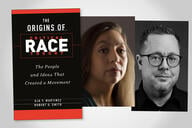You have /5 articles left.
Sign up for a free account or log in.
Environmental sustainability is the theme of Mitchell Thomashow’s latest book, The Nine Elements of a Sustainable Campus, (MIT Press). The former president of Unity College came to the environment-focused Maine campus in 2006 with the plan of adopting sustainable changes. In his book, he talks about why colleges are good places to practice sustainability. One of the reasons, he says, is that colleges can potentially influence the way people “think about the world.” These institutions are responsible for addressing society’s important issues, which right now include the global environmental crisis, he explains in the book, which identifies nine elements to be used by college leaders.
Thomashow is the director of the Second Nature Presidential Fellows Program, a role in which he helps colleges promote a clear sustainability plan to students and faculty. He also wrote Ecological Identity and Bringing the Biosphere Home (MIT Press). He responded to questions via email.
Q: What types of challenges might college leaders experience from students and employees on their campuses when they try to adopt sustainability changes?
A: The main question that most students and employees ask in regard to sustainability initiatives is why they should make the effort. Most employees want to understand how a new initiative will improve the quality of their working life, make their jobs easier, and save them time. It’s incumbent on college leaders to carefully explain why sustainability initiatives matter, how they will improve the quality of campus life, how they will save the campus money, and how they will ultimately enhance the campus landscape. Students want to understand how a sustainability initiative will improve their life on campus, or if sustainability is a curricular initiative, why it matters for their education and career choices.
Q: You list initiatives, such as serving local food in the cafeteria, that colleges can adopt. Why might some colleges not be taking these sorts of actions?
A: Over the last several years I have visited over 30 different college and university campuses. They are all engaged in important sustainability activities. However, many struggle to implement sustainability initiatives as rapidly as they would like. Typically, this is because of financing. Some initiatives, especially those that are energy, food, and materials related (infrastructure) require capital investment. Sometimes, too, initiatives are slow to emerge because of layers of administrative approvals, contracts, and protocols. In some cases, sustainability is not a priority for the college leadership. There are dozens of reasons why sustainability initiatives don’t take hold as quickly as their advocates would like. I always advise sustainability practitioners to find how they can maximize their leverage, determine the paths of least resistance, find their allies on campus, demonstrate the short and long-term advantages of their proposals, and proceed accordingly.
In regard to food, more specifically, I’m very encouraged at the extraordinary progress that so many campuses are making in their cafeterias. Most food services are delighted to work with their campuses in this regard.
Q: You mention that Unity began to provide more nutritional options in the cafeteria, but the college still used a few food distributors that relied on the industrial farming system. Why is that?
A: Maine has a very short growing season. Although it has a very active local growers movement, highlighted by the spectacular Common Ground Fair (held in Unity, Maine), it would be quite a challenge to serve only local food in the cafeteria. We established goals each year to increase the percentage of local food used in the cafeteria, we worked with local growers whenever possible, we dramatically increased the amount of food we grew on campus, we enhanced campus vegetable growing infrastructure, and we emphasized nutrition and choice as crucial to cafeteria cuisine. Essentially, we tried to change the culture of how we think about food, nutrition, and local agriculture.
Q: You talk about how the “soft energy” solution suddenly became popular and campuses adopted solar technologies and other energy efficient techniques, thanks to the push from students and faculty members. How can colleges get that kind of support from students and faculty?
A: The proof is in the doing. The best way to get student support for “soft energy” solutions is to provide residential settings that actively engage the students in conservation, alternative energy sources, and energy monitoring. Colleges and universities have an opportunity to educate students as to the lifestyle choices that are intrinsic to residential and cooperative living. Faculties are typically delighted to incorporate hands-on, service-oriented teaching in their classes. When they engage students in projects that will make a difference on campus, they achieve high motivation and excitement. Engineering programs can develop soft energy solutions that can be applied on campus. Business programs can develop the financing schemes. Arts and design programs can work on the aesthetic implications.
Q: It seems like you were able to start making moves toward creating a sustainable campus once the college obtained the solar panels that were on the White House during President Carter’s term. Filmmakers, environmental activists, museums and even Google were all interested in them. What kind of exposure did this give the college and why do you think there was a sudden interest in them?
A: Actually, the majority of our sustainability efforts were launched many years after the Jimmy Carter solar panels arrived on campus. However, their presence became a superb icon for our sustainability planning. In 2006, the sustainability movement took off. Organizations like the ACUPCC (American College and University Presidents Climate Commitment), AASHE (Association for the Advancement of Sustainability in Higher Education), and the USGBC (United States Green Building Council), experienced exceptional growth starting at that time. Since 2006, we’ve seen the emergence of hundreds of sustainability programs and possibilities. The Jimmy Carter solar panels were symbolic of that vision. It was fitting and colorful that they would wind up on a college campus in rural Maine. People were interested in the story as it gave additional ballast to the growing sustainability movement. Meanwhile, we built (with the help of Bensonwood Homes) the first LEED Platinum, active and passive solar presidential residence on any college campus. Both the Jimmy Carter Solar Panels and The Unity House were perfect icons for our college, demonstrating the legacy, continuity, and future of sustainability.
Q: In the book, you say that before you became president of Unity College, there were too many majors that sounded alike. You stressed that there should be a clear, “unifying” vision to help prospective students understand the college’s strengths. One of your recommendations was to have the faculty work with the admissions office. In a little over two years the college was able to create five new centers that housed 18 “well defined” majors. How did you go about doing that?
A: College presidents have to tread very carefully when it comes to curricular changes. As the president, my role was to explain why it was imperative for our curriculum to be dynamic, innovative, pertinent, and practical. Also, I had to emphasize that such features would attract students and yield workplace results. Finally, I had to promote an affordable curriculum. We had to clarify our strengths and amplify them. We couldn’t offer everything. I suggested a mandate to the faculty. I asked them to take two years to reorganize the curriculum according to these criteria. I suggested that I would always be available for conceptual help, but ultimately the faculty were the stewards of the curriculum. I asked the vice president of academic affairs to supervise a two year academic “master planning” process. There were many challenges to making this happen, but the faculty successfully accomplished the task. I believe that curricular renewal is an ongoing process. The current Unity College president is continuing the process.




